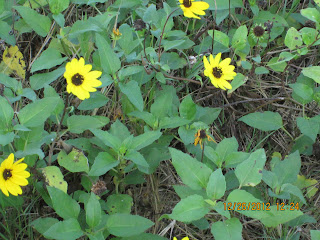That warmth and sun mean that some flowers bloom through the winter, even though we were above Florida’s frost line and not in the tropics. Genuinely tender things were done for the year, and deciduous trees had lost their leaves, but the blooms of Christmas were there for the enjoying. Some were exotic to my northern eyes, like this Chinese hibiscus growing in my in-laws' yard. While I know that they really provide no benefits to wildlife, it is difficult to resist the allure of something this outrageously gorgeous.
Also in bloom were familiar summer annuals long frozen out in our area, like this morning glory
and this pentas, blooming at the botanical gardens of the Florida Institute of Technology in Melbourne.
Our beachside motel was landscaped with sand-tolerant succulents. I had never seen aloe in bloom and had no idea that the familiar kitchen burn remedy is likely a hummingbird magnet.
And while there were agaves at the beach when I grew up,
I had no idea that their flower spikes are taller than any house in which I have ever lived.
Of course, the area boasts more common, close-to-the-ground things. Sand marigolds were everywhere, providing nectar for the butterflies that were still fluttering around, even at the close of the year.
I know that winter's just arrived, but spring can't come soon enough for me.
I had no idea that their flower spikes are taller than any house in which I have ever lived.
Of course, the area boasts more common, close-to-the-ground things. Sand marigolds were everywhere, providing nectar for the butterflies that were still fluttering around, even at the close of the year.





















































